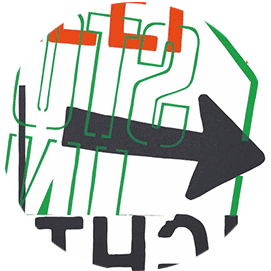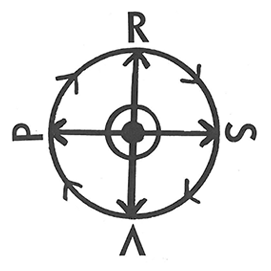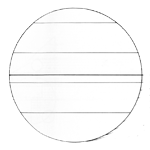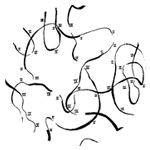For the improviser, the physicality of producing sound (the hardware) is not a separate activity from the thoughts, emotions and ideas in music (the software). In the act of creation, there is a constant loop between the hierarchy of factors involved in the process. My lungs, lips, fingers, voice box and their working together with the potentials of sound are dialoguing with other levels which I might call mind and perception. The thoughts and decisions are sustained and modified by my physical potentials and visa versa, but as soon as I try to define these separately I run into problems.1
Language struggles with depicting physical action, and nowhere is this struggle more evident than in language that tells us what to do. Whoever has tried to assemble a do-it-yourself bookcase following written instructions knows the problem. As one’s temper rises, one realizes how great a gap can exist between instructive language and the body.2
The two quotes above, from saxophonist Jim Denley and sociologist Richard Sennett, illustrate one of the fundamental problems and resources for notation for improvisers: negotiating the immediate physicality of improvisation, and the mediate symbolicity of notation. The connection of the improviser to her instrument is kinetic, local, and focused on the in-time, which seems directly at odds with the mediated, portable, coded, and mostly over-time3 nature of notation.
The interface between these two positions is present throughout the music examined in Tactile Paths and many other notated pieces for improvisers, whether or not explicitly expressed in scores themselves. Building on Denley’s hardware-software metaphor, one can see how Bob Ostertag deliberately repatches the performer-instrument feedback loop through the recording process in his Say No More project (1993a; 1993b; 1996). Ben Patterson embeds a long-term process of exploring the physical qualities of his instrument with preparations in his Variations for Double-Bass (1999). Performers experience types of movement and instrumental technique in the conventionally notated sections of my Apples Are Basic (2008) that inflect or guide improvisation in the graphically notated sections. Richard Barrett refers primarily to the physical properties of material, rather than to quantifiable pitches and rhythms, in his fOKT series (Barrett 2005). Even Cornelius Cardew – who gives no instructions at all to performers of his abstract graphic score Treatise (1970) – grounds their interpretations in embodied experience ipso facto through his very refusal to instruct.
In the present chapter, I would like to foreground the encounter between physicality and notation in a documentary film made with director Zach Kerschberg entitled Seeing the Full Sounding: Christopher Williams explores two pieces by Malcolm Goldstein. This film traces the dynamic and analytically slippery connections of physical experience, sound, and notation in my performances of Malcolm Goldstein’s Jade Mountain Soundings (1988, 63-67; henceforth JMS) and on and on and always slowly nowhere (2011; henceforth OAO). Rather than merely providing examples or support for the present text, the film itself is the primary argumentational vehicle; these words may be taken as an introduction.
In “Expressive Instructions”, a short but powerful chapter in his book The Craftsman (2008), Sennett compares three recipes by chefs Julia Child, Elizabeth David, and his teacher Madame Benshaw for an elaborate French chicken dish called “Poularde à la d’Albufera”. According to Sennett, each of these recipes provides a successful alternative to the traps of “dead denotation”, or the debilitating use of commands that “name acts rather than explain the process of acting […] [that] tell rather than show” (184). Child achieves this through sympathetic illustration; she points out likely pitfalls and “focuses on the human protagonist rather than on the bird” (185). David explains through scene narrative, “impart[ing] technique through evoking the cultural context of this journey” (187) of cooking the chicken. Benshaw’s minimalistic and poetic recipe4 uses metaphors “in order to give each action heavy symbolic weight” (193). In all of these recipes, Sennett shows how “the imaginative trope becomes itself the explanation […] and how unpacked tacit knowledge can become expressive instruction” (184).
In the vein (forgive the pun) of “Poularde à la d’Albufera”,5 Goldstein’s music offers a choice opportunity to explore the complex relationship between text and body by taking the physicality of string and vocal techniques as its very subject. JMS and OAO create an entire universe from the inner complexity of single sounds, the haptic poetry of a soloist’s movement with bow, instrument, and voice, and the materiality of sound in space. And like Child’s, David’s, and Benshaw’s recipes, Goldstein negotiates the ineluctable slippage between notation and the physicality of improvisation by using an “imaginative trope” – or guiding creative image – that he calls Sounding:
Soundings: plumbing the depths of sounds and in/of me. All sounds. Touch releasing things into motion; gesture realized/resonances of texture becoming song. (Music: the process of living, sound.) Improvisations, my violin playing… an overflowing of myself in space. Sound as a physical reality, touching upon the ears of the body; (“upon the string, within the bow… breathing”)… reverberations within the skull become a changing landscape – a new music… As one sound unfolds, I follow it with my bow, bent thick or thin upon the line; gut and metal unfolding, stretched taut, full length the black wood, a pathway of no stepping stones while fingertips and footholds and swaying, sing a resonance of lush green. (Goldstein, as quoted in Arms 2012, 39).
This poetic cluster, in which the materiality of sound, movement, and subjectivity intersect, leads me to a number of questions. How does Goldstein’s notation articulate the terms of his tacitly developed Soundings to me and other performers? How do the physical qualities of my reading, his writing, and our imaginations interact in and through performance? What role do these interactions play in the experience of listening and viewing?
Instead of responding verbally, I have attempted to answer these questions by showing rather than telling; Seeing the Full Sounding depicts the problems and minute details of reading and performing JMS and OAO directly in their native media of sight, sound, and movement.
An active and poetic approach to the medium of film is crucial here. Rather than using “neutral” surveillance-style video footage as raw data to be taxonomized or formalized (cf. Sennett’s “dead denotation”), Kerschberg and I exploit the subjective movement of cameras onstage. Like the alternation of wide-angle shots and overhead closeups in Child’s television series,6 this allows us to trace and focus subtle movements that evade the unaided eye and ear. We also include offstage footage from the residency where the film was shot (“B-roll” in film jargon) as “scene narrative, in which the ‘where’ sets the scene for how’” (Sennett 2008, 188). Shots of me wandering through the Bohemian wheat fields and capering about lumber piles parallel how my sensory awareness is coupled to the space in which I am performing. (Consider in particular my investigation of the insects in the rafters and the creaky door hinges at the beginning of the film.) Most importantly, we superimpose notation on the performance footage in the editing process, so you may experience some analog of the feedback between notation and physicality that I experience while playing. My hope is that these techniques themselves become expressive instructions, revealing corporeal and temporal dynamics that would otherwise remain hidden behind skin, skull, and the “fourth wall” of performance.
The film, however, neither attempts nor succeeds to tell the “whole story” on the topics elaborated above; a few important points are glossed over. First of all, as the reader will gather from my comments in the film (3:02), my relationship to the notation has evolved through direct communication and hands-on work with Goldstein, as well as an immersion in his writings and recordings. I do not approach the scores as self-sufficient entities; nor would I counsel any other prospective performers to do so. Particularly in the case of JMS – which bleeds seamlessly into reflections before and after its appearance in Sounding the Full Circle (1988), a seminal anthology of Goldstein’s writings and scores – the continuity of Goldstein’s notated work with his holistic musical (and life) practice is paramount.
Another issue that might need emphasis is a major difference between me performing JMS and OAO. In JMS, my eyes are coupled to the score, and the physicality of reading recreates the movements of Goldstein’s writing. This conditions the position of my head and body, even the slightest movements of which are audible in the fragile long tones of the piece. In OAO, however, I do not read the score at all during performance; rather, I memorize the simple sectional structure of the piece beforehand and internalize the sonic images that Goldstein creates in his verbal notation. While this over-time aspect of learning the piece is not captured in the film, the physicality of reading OAO is still crucial, as my interpretation of the words on the page is filtered directly through my instrumental imagination.7
Nevertheless, the film shows how deeply Goldstein’s music entwines the physicality of improvisation and notation. His scores and my performances deconstruct any would-be opposition of notation and improvisation by showing that physicality belongs to both practices, linking over-time and in-time processes in unexpected and fundamental ways. Such links stand to illuminate a dynamism central not only to Goldstein’s music, but to notation for improvisers as a whole.
- Jim Denley (Denley 1992, 29).
- Richard Sennett (Sennett 2008, 183).
- Cognitive scientist Tim Smithers frames the notions of in-time and over-time processes as follows: “For things that happen IN-time the time taken matters. If they happen in different amounts of time they are importantly and distinguishably different happenings. In these cases, the time in which they happen is a fundamental characteristic of the happening. […] For example, in walking, the time taken to move legs matters. If the leg movements involved took different amounts of time we would not have the same kind of walking – we may not even have walking at all! For things which happen OVER-time the time taken to happen is of no fundamental importance, though it may well be of practical importance. In these cases, if the amount of time taken changes or varies we still have the same thing happening. The time-taking aspect of these kinds of things can be safely disregarded in any proper understanding or explanation of them: they are NOT embedded in time; they are just contained in time.” (1996, 114)
- “Your dead child. Prepare him for new life. Fill him with the earth. Be careful! He should not over-eat. Put on his golden coat. You bathe him. Warm him but be careful! A child dies from too much sun. Put on his jewels. This is my recipe.” (Sennett 2008, 190)
- Disclaimer: I do not wish to overstate the similarities between cooking and Goldstein’s music. To the most obvious differences between the culinary and musical arts, we may add that the role of hand-eye(-ear) coordination in music is expressive; in cooking, it is functional. In the concert hall, there is no material product – sounds and movement are ephemeral; in the kitchen, one makes dinner. Furthermore JMS‘ notation consists primarily of tablature, not words. However I do believe Sennett’s analysis of the basic problem of communicating physical activity and awareness through the printed medium is eminently relevant to the music under study.
- See for example her instructions on cooking an omelet at https://www.youtube.com/watch?v=RThnq3-d6PY.
- For a discussion of the over-time embodied work of interpreting dance notation, see Watts 2010.
References
- Arms, Jay. 2012. “The Music of Malcolm Goldstein.” M.A. Thesis, University of California, Santa Cruz.
- Barrett, Richard. 2005. fOKT. Unpublished score.
- Cardew, Cornelius. 1970. Treatise. London: Hinrichsen Edition, Peters Edition Limited.
- Denley, Jim. 1991. “Improvisation: The Entanglement of Awareness and Physicality.” Sounds Australian 32: 29.
- Goldstein, Malcolm. 1980. Soundings for Solo Violin. LP. Sheffield, VT.
- ———. 1988. Sounding the Full Circle. Sheffield, VT: Malcolm Goldstein. http://frogpeak.org/unbound/goldstein/goldstein_fullcircle.pdf.
- ———. 2011. On and on and Always Slowly Nowhere. Unpublished score.
- Ostertag, Bob. 1993a. Say No More. Unpublished score.
- ———. 1993b. Tongue-Tied. Unpublished score.
- ———. 1996. Verbatim. Unpublished score.
- Patterson, Ben. 1999. Black and White File. Wiesbaden: (self-published).
- Sennett, Richard. 2008. The Craftsman. New Haven: Yale University Press.
- Smithers, Tim. 1996. “On What Embodiment Might Have to Do with Cognition.” In Proceedings AAAI Fall Symposium, Embodied Cognition and Action, edited by Maja Mataric, 113–118. http://www.aaai.org/Papers/Symposia/Fall/1996/FS-96-02/FS96-02-024.pdf.
- Watts, Victoria. 2010. “Dancing the Score: Dance Notation and Différence.” Dance Research 28 (10): 7–18.
- Williams, Christopher. 2008. Apples Are Basic. Unpublished score.



